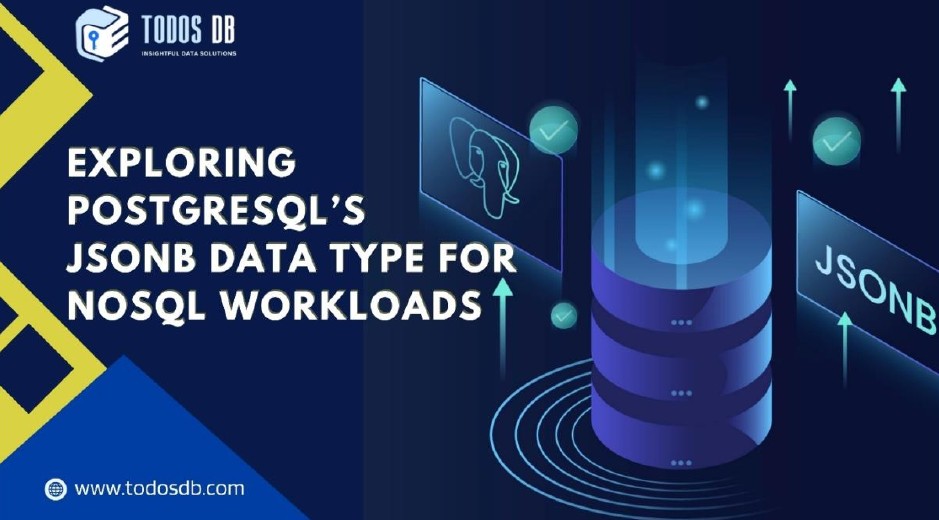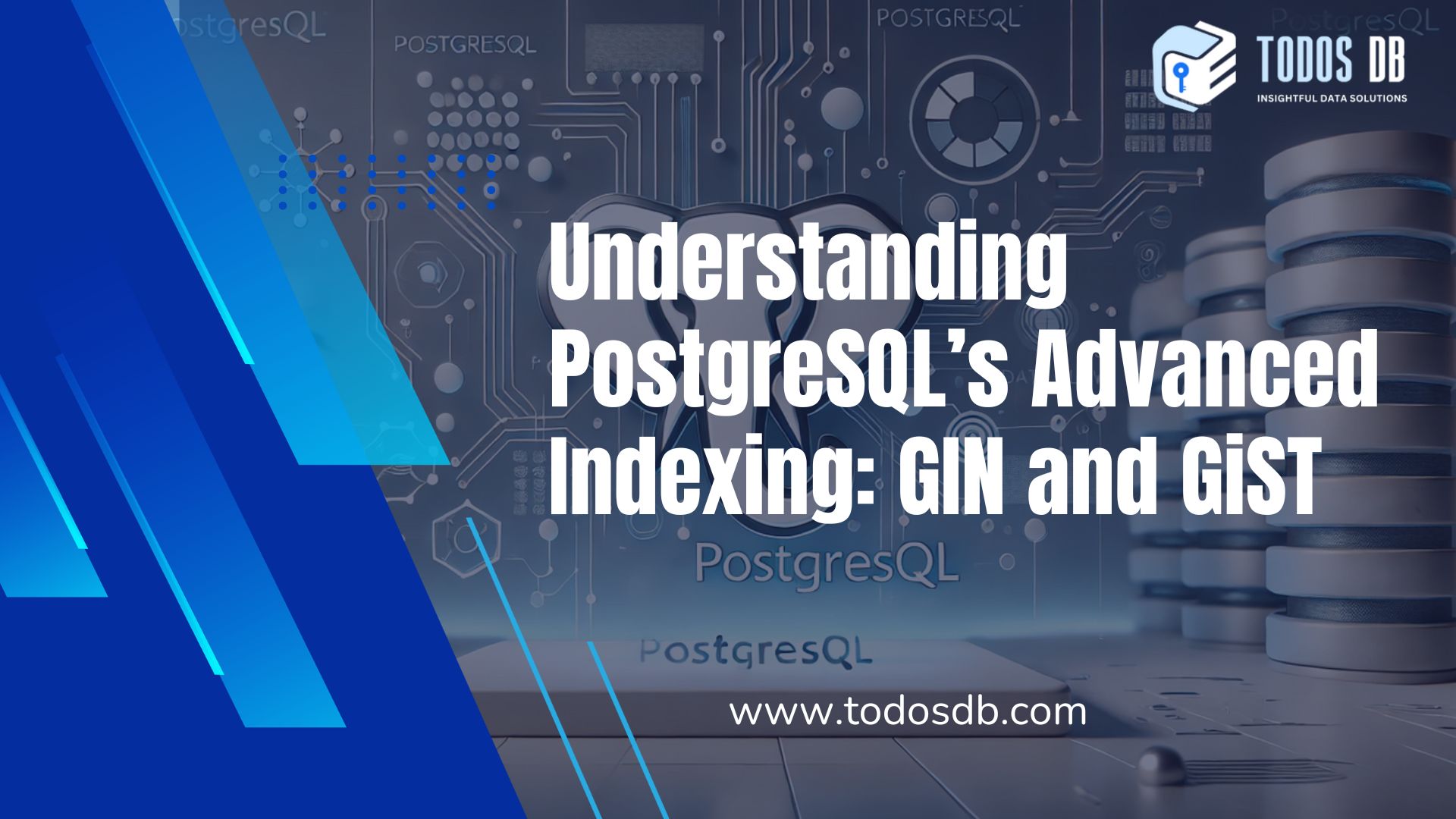PostgreSQL has undergone significant transformations over the years, evolving into a powerful relational database that incorporates features traditionally associated with NoSQL systems. Among its most notable enhancements is the JSONB data type, which allows for the efficient storage, querying, and manipulation of JSON (JavaScript Object Notation) data. This article provides an in-depth exploration of JSONB, detailing its architecture, performance characteristics, use cases, and practical examples, making it suitable for a variety of NoSQL workloads.
1. Understanding JSONB
1.1 JSONB vs. JSON
JSONB (JSON Binary) differs from the regular JSON data type primarily in its storage and processing. While JSON stores data as plain text, JSONB stores data in a binary format, providing several advantages:
- Decomposed Format: JSONB decomposes the JSON structure into a binary format, enabling faster access and manipulation.
- Indexing: JSONB supports indexing, which allows for efficient querying of specific elements within the JSON structure.
- Schema Flexibility: JSONB accommodates semi-structured data without requiring a predefined schema, making it ideal for applications where data structures can evolve.

1.2 Internal Structure of JSONB

Internally, JSONB data is represented as a collection of key-value pairs, organized in a way that optimizes both storage and retrieval. The binary format allows PostgreSQL to efficiently parse and query JSON data without converting it back to text, resulting in significant performance improvements.
2. Creating and Populating JSONB Data
To utilize JSONB, you must first define a table with a JSONB column. The following example illustrates how to create a table designed to store product information:
- Example: Creating a Table with a JSONB Column
CREATE TABLE products (
id SERIAL PRIMARY KEY,
name VARCHAR(100),
details JSONB);- Inserting Data into JSONB
You can insert JSON data into the JSONB column using the ::jsonb type cast. Here’s how to insert several products with varying specifications:
INSERT INTO products (name, details) VALUES
('Smartphone', '{"brand": "XYZ", "model": "ABC123", "features": ["4G", "64GB storage", "Dual camera"]}'::jsonb),
('Laptop', '{"brand": "ABC Corp", "model": "ProBook", "features": ["16GB RAM", "512GB SSD", "Touchscreen"]}'::jsonb),
('Tablet', '{"brand": "Techie", "model": "TabLite", "features": ["WiFi", "32GB storage"]}'::jsonb);2.1 Validating JSON Data
When inserting data, PostgreSQL will automatically validate the JSON structure. If the data is not valid JSON, the database will reject the insertion, helping maintain data integrity.
The schema of the JSON payload from the previous example is a little intense for a blog post, so let’s instead say we intend for a table’s JSON column to hold objects with a string attribute named foo and no additional attributes.
create table some_table
( id serial primary key,
metadata json not null)
;
insert into some_table (metadata)
values (<SQL Input>);
3. Querying JSONB Data
PostgreSQL offers a rich set of operators and functions to efficiently query JSONB data. Understanding how to leverage these features is crucial for extracting meaningful insights from your JSONB columns.
3.1 Accessing JSONB Data
You can access JSONB properties using the -> and ->> operators:
- -> Operator: Retrieves a JSON object field.
- ->> Operator: Retrieves a JSON object field as text

- Example: Accessing JSON Properties
-- Retrieve the brand of the smartphone
SELECT details -> 'brand' AS brand FROM products WHERE name = 'Smartphone';
-- Retrieve the model of the laptop as text
SELECT details ->> 'model' AS model FROM products WHERE name = 'Laptop';3.2 Querying JSONB Arrays
JSONB allows for the storage of arrays. You can query elements within these arrays using operators such as @> for containment checks.
- Example: Checking Array Containment
-- Find products with the feature '4G'
SELECT name FROM products WHERE details -> 'features' @> '["4G"]';3.3 Using JSONB Functions
PostgreSQL provides various functions for more complex queries. For instance, you can use the jsonb_array_elements() function to unnest JSON arrays.
- Example: Unnesting JSON Arrays
To list all features of all products:
SELECT name, feature
FROM products, jsonb_array_elements(details -> 'features') AS feature;3.4 Advanced Querying Techniques
PostgreSQL allows for more advanced querying using the jsonb_path_query() function, which supports JSONPath expressions. This enables powerful querying capabilities akin to XPath for XML.

- Example: JSONPath Querying
-- Retrieve all products with features containing 'WiFi'
SELECT nameFROM productsWHERE jsonb_path_exists(details, '$.features[*] ? (@ == "WiFi")');4. Indexing JSONB Data
One of the standout features of JSONB is its support for indexing, significantly enhancing query performance. PostgreSQL allows for various index types, including GIN and BTREE indexes.
4.1 Creating GIN Indexes
GIN indexes are particularly well-suited for JSONB data because they efficiently index composite types and allow for rapid searches on individual JSON fields.
- Example: Creating a GIN Index
CREATE INDEX idx_products_details ON products USING GIN (details);4.2 Performance Benefits of Indexing
After creating the index, you can analyze its effectiveness using the EXPLAIN command:
EXPLAIN ANALYZESELECT name
FROM products WHERE details -> 'brand' = '"XYZ"';This command will provide the execution plan, showing whether the index is being utilized and its impact on performance.
5. Modifying JSONB Data
PostgreSQL provides powerful functions and operators to modify JSONB data directly, making it easy to adapt your data structure as requirements evolve.
5.1 Updating JSONB Data
You can use the jsonb_set() function to update specific keys in a JSONB object.
- Example: Updating JSONB Properties
-- Update the features of the smartphone
UPDATE products
SET details = jsonb_set(details, '{features}', '["5G", "128GB storage", "Triple camera"]'::jsonb)
WHERE name = 'Smartphone';5.2 Adding New Key-Value Pairs
You can add new key-value pairs using the || operator to concatenate JSONB objects.
- Example: Adding New Key-Value Pairs
-- Add a new key for price
UPDATE products
SET details = details || '{"price": 699}'::jsonb
WHERE name = 'Smartphone';6. Performance Considerations

While JSONB provides powerful features, it’s essential to consider performance implications, especially with large datasets.
6.1 Storage Overhead
Although JSONB is more efficient than plain JSON, it can consume significant storage, particularly when handling large arrays or deeply nested structures. Therefore, careful data modeling is crucial.
6.2 Indexing Strategy
Creating the right indexes is vital for ensuring optimal performance. GIN indexes are effective for searching within JSONB data, while BTREE indexes may be appropriate for scalar values.
6.3 Regular Maintenance
Regular maintenance operations, such as VACUUM and ANALYZE, help keep the database optimized, especially after large updates or deletes.
7. Use Cases for JSONB in NoSQL Workloads

JSONB is ideal for various applications requiring schema flexibility and high-performance data retrieval. Here are some common use cases:
7.1 Content Management Systems
Content management systems (CMS) often deal with varying data structures for articles, posts, and user-generated content. JSONB allows developers to store different content types in a single table without rigid schema constraints.
7.2 E-commerce Platforms
In e-commerce applications, products may have different attributes (size, color, specifications) that can vary widely. JSONB allows these attributes to be stored flexibly, accommodating different product types seamlessly.
7.3 IoT Applications
Internet of Things (IoT) applications generate vast amounts of data that can be semi-structured. JSONB is an excellent choice for storing sensor data, configurations, and device statuses, as it allows for rapid querying and modification.
7.4 Data Warehousing and Analytics
JSONB can be employed in data warehousing environments where diverse data sources need to be integrated. Its ability to handle semi-structured data allows analysts to work with a variety of formats without extensive pre-processing.
7.5 Logging and Event Data
For applications that generate logs or events, JSONB is useful for storing unstructured log entries. Its flexible schema allows for easy adaptation to different logging formats and structures over time.
Conclusion
PostgreSQL’s JSONB data type is a powerful tool that enables developers to leverage the flexibility of NoSQL databases while retaining the advantages of a relational system. Its capabilities for indexing, querying, and modifying JSON data make it suitable for a wide range of applications, including content management systems, e-commerce platforms, IoT applications, and data analytics.
By understanding the features and best practices associated with JSONB, developers can effectively harness its potential to build robust, high-performance applications that meet the demands of modern data workloads. As database technologies continue to evolve, JSONB will play a crucial role in bridging the gap between traditional relational databases and the increasingly complex landscape of NoSQL solutions.
This flexibility, combined with PostgreSQL’s rich feature set and strong community support, positions JSONB as an essential component in the toolkit of modern data-driven applications.


